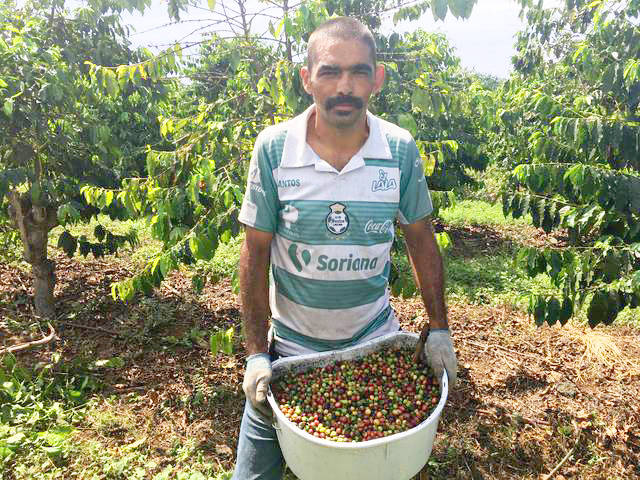LIHUE — While the coffee season came to a sudden halt for some farms in Hawaii, particularly for West Hawa, Kauai Coffee has been enjoying a normal season on Kauai’s Westside.
And they’re reaching peak season right now.
“We’re right at the point where we’re getting biggest volume of product per day,” said Fred Cowell, general manager at Kauai Coffee. “Our harvest is usually similar to Kona with the start in September. It runs around three months.”
Coffee trees bloom in the spring and fruit about seven and a half weeks later — once that happens harvest starts. Farmers study that cycle to make hiring and product decisions.
Statewide, yield and profits for the 2018 harvest season will drop from average levels due to a variety of factors hitting farmers thought the season. The result will be a leap in prices, but experts say it might not be enough to even out losses.
Suzanne Shriner, president of the Kona Coffee Farmers Association, told West Hawaii Today anecdotal evidence generated from member reports points to as high as a 30 percent dip in yield for many local farmers.
Armando Rodriguez, proprietor of the King’s Cup 100% Kona Coffee brand, sells both green and roasted products. One of the farms he works in Kealakekua was expected to pull down 40,000 pounds this season.
His adjusted projection last week was that pickers would harvest around 16,000 pounds, a yield reduction of 60 percent.
Cowell said he’s keeping yield poundage close to the vest for Kauai Coffee, though they track those numbers thoroughly.
Even working with better prices, sellers will have a tough time beating the numbers. While Shriner believes the price of green beans will push to around $18 per pound, which she said is “approaching record levels,” the market rate for cherry is expected to remain relatively flat.
“That’s probably up about $1 a pound from last year,” Shriner said of the expected price of green. “But if you figure that we’re (down) 30 percent yield, and the price is going up not even 10 percent, there’s still a pretty big difference for the farmers.”
“And the cherry price is the same as last year,” she added. “For people who don’t sell green coffee, all they’re seeing is the loss.”
Stuart Nakamoto, extension economist with the College of Tropical Agriculture and Human Resources at the University of Hawaii at Manoa (UH-CTAHR), agreed.
“If they’re seeing that big of a drop, that’s got to hurt the bottom line,” he said. “I don’t think prices are going to adjust that much.”
Nakamoto added such a significant decrease in yield would put most small farms out of business if they relied solely on coffee to remain financially viable. Luckily, he explained, coffee isn’t the primary source of income for many small farmers working across the Kona coffee belt.
Farmers and researchers named a number of factors that likely contributed to cutting the coffee season short — less rainfall between April and June, increased vog manipulating the amount of light at different times during the season and the availability of labor.
And while the connections aren’t always entirely clear, many in the industry tied these effects to the most recent eruption at the Kilauea volcano, which stretched from May to August.
Cowell has been following the season statewide from the start and said conditions were close to normal early in the season.
“When they (Big Island) got the heavy vog, they knew it was going to have an effect,” Cowell said. “Then the vog stopped, but things got really dry toward the back half of harvest.”
That recipe is enough to shock the trees, but rainfall also played a part.
Kauai Coffee Company was able to escape some of those drought conditions by use of its extensive irrigation system, which can deliver water to any of their trees.
“Irrigation, it’s a cost of production increase but it gives us some risk reduction,” Cowell said. “At this point just the ability to push water where it’s needed most is helpful.”
Shriner said she believes the combination of less rain and less sun early in the year contributed to less production and the shorter season, which actually led to more sun at the wrong time after the vog cleared. That turn of events didn’t provide ideal conditions for production as it exacerbated an already strained labor market.
A hang-up in the flow of labor also affected the state’s season.
“Labor rotates from farm to farm, it’s not set up that way it’s just the natural flow, and when everything ripened rapidly, they didn’t have enough pickers,” Cowell said.
•••
West Hawaii Today contributed to this report. Jessica Else, staff writer, can be reached at 245-0452 or at jelse@thegardenisland.com.


